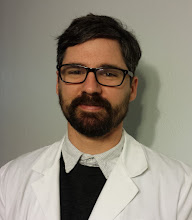N=1 has turned into a symbol, a representation meaning to treat a person as an individual, as a unique complex being that has personal factors and history that make them who they are. (see the mountain stream analogy via Aaron Swanson.) When we speak about treating the person in front of us we can say "N=1."
This is being championed by many groups. The "Pain Science crowd" certainly incorporates individualism and biopsychosocial constructs. Cause Health is bringing awareness, and I'll also recommend Neil Maltby's blog: Becoming More Human.
Here is a slide from the PT Brain Trust's recent presentation at the ODU Alumni CEU Course.
The main concept here is to keep an N=1 approach when thinking of your patient, but an N=100 approach when reading research.
In other words, don't use N=1 research (case studies, Tupperware party techniques) if you want to be effective. Use N=100. Meaning properly powered, large 'N' studies that represent certain populations to choose your treatments for effectiveness.
Then apply this to your patient. N=1.
If you use N=100 for your patient, you will miss seeing them as an individual. Do not try to make them like everyone else, like a population. You will run into problems and perhaps waste your time trying to make their toe-out angle symmetrical, their clavicles level, and like everyone else's. Biomechanics may indeed play a large role in a patient, but remember it's for that person, and their goals.
So remember: N=1 for your patient, N-100 for your research... and off you go!
-Matt Dancigers, DPT
Want an approach that enhances your existing evaluation and treatment? No commercial model gives you THE answer. You need an approach that blends the modern with the old school. Live cases, webinars, lectures, Q&A, hundreds of techniques and more! Check out Modern Manual Therapy!
Keeping it Eclectic...

















Post a Comment
Post a Comment